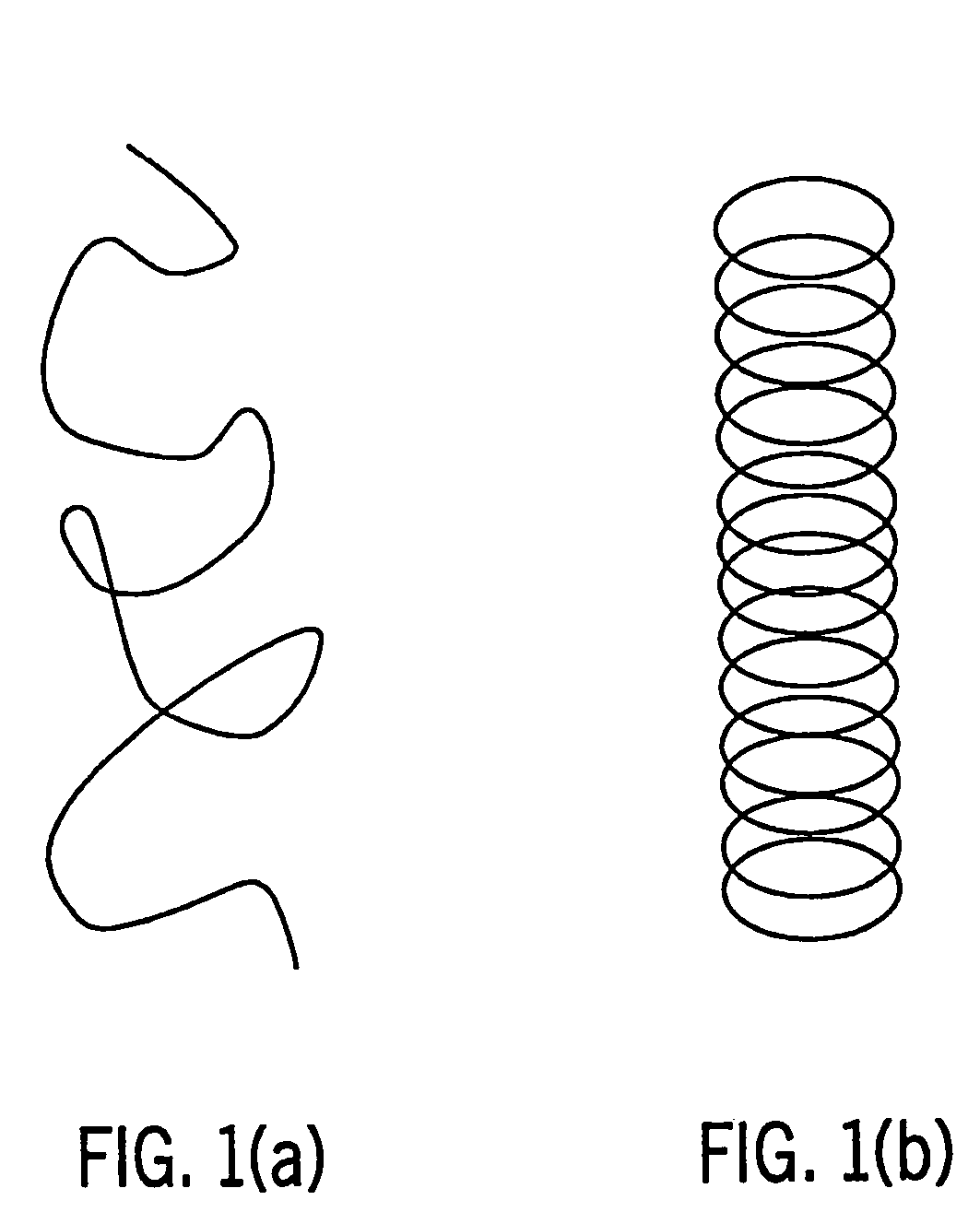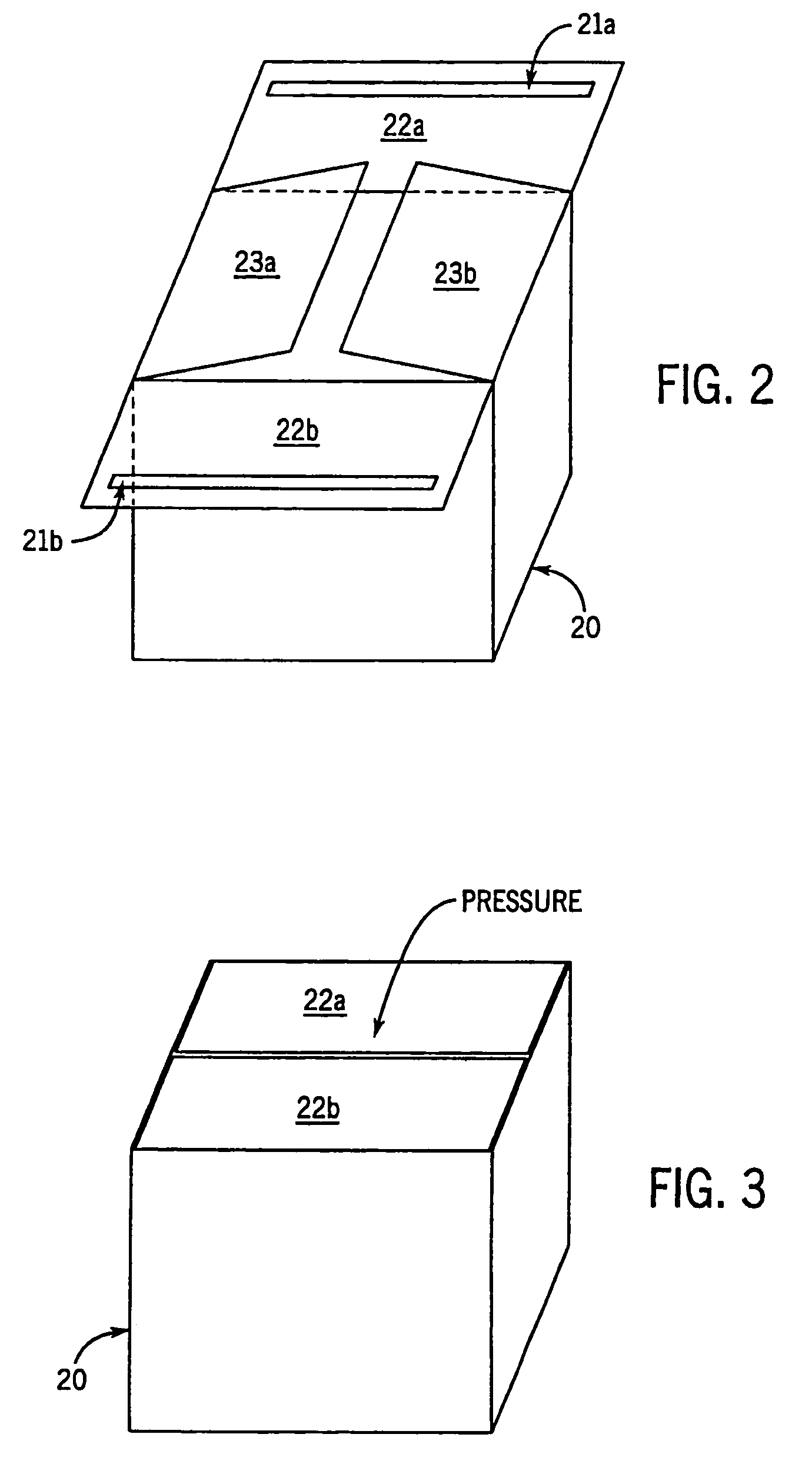Hot melt adhesive composition based on a random copolymer of isotactic polypropylene and a secondary polymer
a polypropylene and composition technology, applied in the direction of film/foil adhesives, synthetic resin layered products, inks, etc., can solve the problems of high requirements for hot melt adhesives, ipp polymer can only be used as a modifier in small amounts, and the majority of commercial hot melt products do not lend themselves to spray applications. , to achieve the effect of strong bonding, strong bonding, toughness and flexibility
- Summary
- Abstract
- Description
- Claims
- Application Information
AI Technical Summary
Benefits of technology
Problems solved by technology
Method used
Image
Examples
examples 1-4
[0139]Hot melt adhesive examples of 1-4 shown in Table 2 were prepared with the ingredients and mixing procedures described herein above. A total of 2000 grams each were made and the mixing was carried out at 350-375° F. under carbon dioxide atmosphere in a laboratory type of mixer what consists of a propeller powered by a motor, a heating mantle, a temperature control unit and a container of about 1 gallon in size. The appropriate amounts of each component, calculated according to the ratios shown in the table, except the mRCP copolymer were added to the container. The temperature of the container was then raised to melt the contents. After the ingredients in the container were completely melted, the motor was turned on to start agitation. Subsequently, the mRCP copolymer component was introduced, and mixed thoroughly therein. The adhesive examples 1-4 are especially useful as elastic attachment adhesive for elastic attachment applications.
[0140]Brookfield Viscosity, Ring and Ball ...
examples 5-7
[0142]Examples of 5-7 were formulated by using the same procedure as herein described above with the ingredients listed in Table 3. These formulations are particularly suited as laminating adhesives for a variety flexible packaging applications and as construction adhesives for disposable nonwoven applications.
[0143]When used as such, the peel strength is the most important measure of adhesive performance. The peel strength of Examples 5-7 was measured and the results were also reported in Table 3. The specimens for the peel strength measurement were prepared by laminating the same polyethylene film and polypropylene spunbond nonwoven fabric as in Examples 1-4 with spiral spray coating technique on CT225 hot melt coater equipped with three ITW controlled fiberization nozzles. The adhesive was applied in the amount of 4 g / m2 at 300° F. application temperature and 0.5 seconds open time. The adhesives of Examples of 5-7 were found to have almost no or very low room temperature tack, lo...
examples 8-9
[0145]Hot melt adhesives of Examples 8-9 were prepared by using the same procedure as herein described above with the ingredients listed in Table 4. In Examples 8 and 9 the adhesive contains a wax (Marcus 300) substituted for the APAO ingredient in the prior formulations illustrated herein. Thus, the adhesives of Examples 8 and 9 contain no APAO. A total of 250 grams each were made and the mixing was conducted at 350° F. under CO2 atmosphere. They are particularly useful for case and carton sealing applications. To illustrate the use for such application, reference is made to FIGS. 2 and 3 herein where single adhesive beads of about 2 mm in diameter, illustrated as 21a and 21b in FIG. 2, was applied by hand across the upper surface of top flaps 22a and 22b of a corrugated box 20 as shown in the figure. Immediately after the adhesive application, the top flaps 22a and 22b of box 20 were folded over and brought into contact with bottom flaps 23a and 23b to seal the box 20. The flaps 2...
PUM
| Property | Measurement | Unit |
|---|---|---|
| melting point | aaaaa | aaaaa |
| melt flow rate | aaaaa | aaaaa |
| density | aaaaa | aaaaa |
Abstract
Description
Claims
Application Information
 Login to View More
Login to View More - R&D
- Intellectual Property
- Life Sciences
- Materials
- Tech Scout
- Unparalleled Data Quality
- Higher Quality Content
- 60% Fewer Hallucinations
Browse by: Latest US Patents, China's latest patents, Technical Efficacy Thesaurus, Application Domain, Technology Topic, Popular Technical Reports.
© 2025 PatSnap. All rights reserved.Legal|Privacy policy|Modern Slavery Act Transparency Statement|Sitemap|About US| Contact US: help@patsnap.com



